

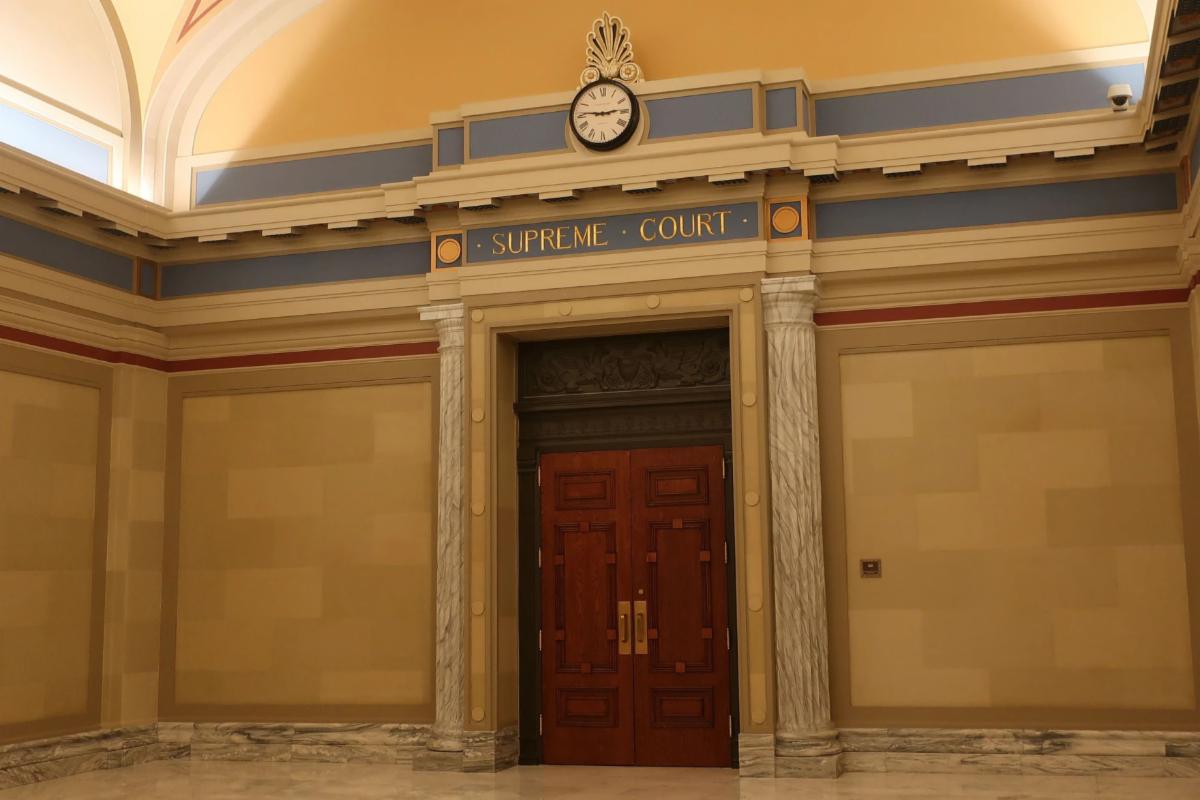
TRIBAL MEMBER CHALLENGES OKLAHOMA TAX COMMISSION AFTER SCOTUS JURISDICTION RULING
by Chinh Doan
Thousands of Oklahomans argue they do not have to pay Oklahoma income tax after the U.S. Supreme Court ruling on tribal jurisdiction that applied to criminal cases.
One of those pending cases is from an Okmulgee woman, and the case is now sitting at the Oklahoma Supreme Court.
Alicia Stroble's case has been in the court system for a year and a half. Stroble’s attorney said the back and forth has to do with the legal definition of "Indian Country" for income tax law, and what comes out of it could impact many tribal citizens.
It is a case over which tribal members would be exempt from paying income taxes in Oklahoma.
"You must be a member of a federally-recognized tribe - number one,” explained Michael Parks, Stroble's attorney. “Number two: you must earn your income from a source within the Indian Country of the tribe you're a member of. And then third, you must live within the Indian Country of the tribe that you are a member of. You must satisfy all three requirements."
Parks said his client, a Muscogee (Creek) citizen, meets all these requirements, so she should not have to pay her 2017 through 2019 income taxes.
Parks said Stroble filed a tax protest after the Oklahoma Tax Commission denied her exemption request, and the case went before an administrative law judge, who is an employee of the OTC.
The judge ruled in Stroble's favor, but then the three commissioners, who are political appointees of the OTC, reversed the ruling.
That is when Stroble filed an appeal with the Oklahoma Supreme Court.
Governor Kevin Stitt gave News On 6 this statement: “I will always fight for fairness, and it is just preposterous to believe that in this scenario a single mom of a different race would have to pay taxes but I, as governor, wouldn’t because of my native heritage. The reality is we all drive on the same roads, send our kids to the same schools-we should all play by the same set of rules regardless of race."
Several tribes, including the Choctaw, Chickasaw and Cherokee Nations, also filed briefings, siding with Stroble.
"A lot of people make that mistake that this is about race when really it's about being a citizen of a government, and it's about who has authority over you,” said Sara Hill, Cherokee Nation Attorney General. “It's not that no one has authority over Indians on a reservation. It's that the tribe has authority over Indians on a reservation."
A 2020 OTC report estimates the impact of an income tax exemption for the Muscogee Nation alone would be $21 million a year.
"I do believe that the opinion in this case, good or bad, will affect many Indian citizens living in the state of Oklahoma," said Parks.
Next, the Oklahoma Supreme Court will either decide on this case based on everything that has been submitted or set a date for oral arguments, as requested. The date has not been set.

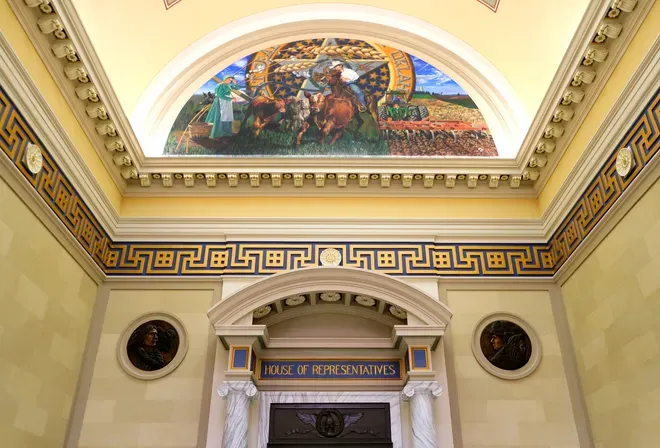
Oklahoma lawmakers voted to extend tribal tobacco compacts. Gov. Stitt has the next move
by Molly Young
The Oklahoma Legislature has signed off on a proposal to renew cigarette tax compacts with tribal nations through 2024. Lawmakers also voted to extend vehicle tag compacts with three of the largest tribes based in the state.
The final approvals on Friday followed a tense back-and-forth between the state’s executive and legislative branches. Lawmakers initially floated plans to renew the tobacco, gas and vehicle tag compacts for five years. But they shifted gears Monday after Gov. Kevin Stitt denounced the five-year renewals as a way to cut him out of negotiations.
It remains to be seen whether Stitt will sign the shorter extensions into law. If not, lawmakers will have to decide whether to return to the Capitol and approve them again. Although the regular session ended Friday, the extensions were passed as part of the special session process, leaving lawmakers a possible path to override potential vetoes.
Stitt has said he is focused on fairness as he attempts to rework terms of the compacts, which are agreements that allow governments to settle conflicting interests. Many cigarette tax compacts are set to expire over the next year. But several tribal leaders have said negotiations have so far gone nowhere.
Choctaw Chief Gary Batton, who described Stitt’s proposed changes to his tribe’s tobacco compact as a “non-starter,” expressed gratitude to lawmakers for stepping in.
“We hope Gov. Stitt will quickly sign these one-year extensions,” Batton said in a statement. “We look forward to working cooperatively to secure long-term agreements.”
Under the measures approved by lawmakers, current and and recently expired tobacco compacts would be extended through December 2024. Vehicle registration compacts between the state and the Cherokee, Chickasaw and Choctaw nations also would remain active through that time.


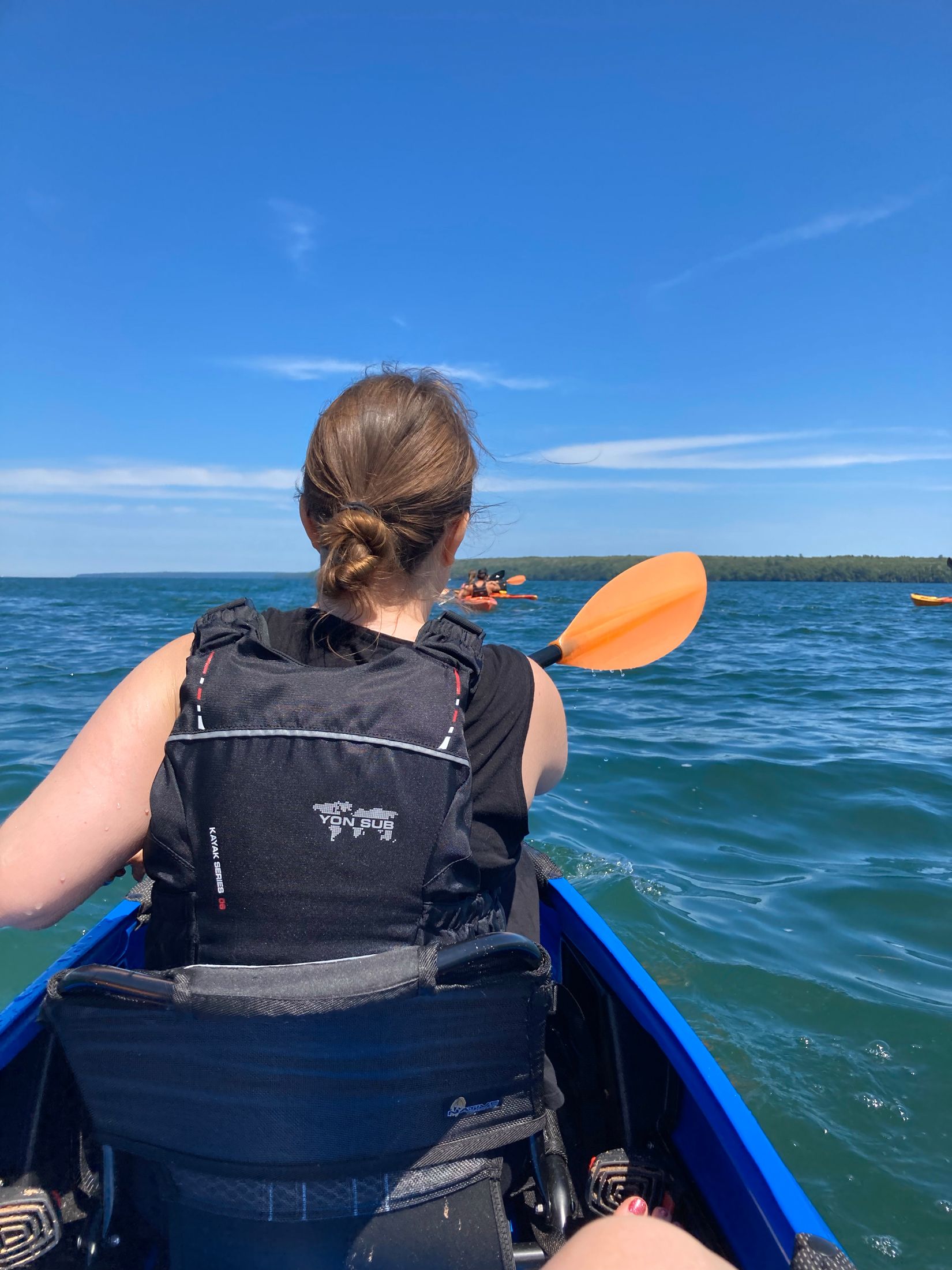
Communications specialist finds meaning as Indigenous farmers’ voice
By Paige Willett
Citizen Potawatomi Nation tribal member Mary Belle Zook spent her childhood on a farm in the Oklahoma panhandle, raising show animals and participating in the National FFA Organization. She graduated from Oklahoma State University with an agricultural communications degree in 2015.
“Growing up, I was very interested in ag law, and there was actually someone who came and presented on wind energy in Oklahoma and whether that was going to be a mineral right or land right. I geeked out on that,” she said.
Now serving as the communications director for the Indigenous Food and Agricultural Initiative through the University of Arkansas School of Law, she brings together her skills, passions, agricultural background and Tribal heritage each day to help Native farmers and producers.
Agriculture as sovereignty
As part of the University of Arkansas School of Law, the IFAI works with Indigenous communities across the country to help them establish and expand Tribal food systems as well as implement federally funded programs.
“We are the back office legal and policy nerds, so we have quite a few attorneys on staff and folks who love to read legislation and see how that’s going to impact Indian Country. I kind of knew that that would be a good fit for me,” Zook said.
They also work with the Native Farm Bill Coalition, which represents the interests of Native populations while working with the federal government to write and pass the Farm Bill. The Farm Bill outlines policy and funding on a national level for agriculture, including food assistance programs, natural resources and more under the U.S. Department of Agriculture. Congress revisits it every five years.
According to Zook, the IFAI and Native Farm Bill Coalition hope to increase the number of provisions for Indian Country in the 2023 version of the law. The 2018 Farm Bill included 63 mentions that positively impact Tribes and Tribal producers.
“We are doing the research, getting in there and digging in deep and providing information to our partners who then can help equip tribal leaders and tribal producers with knowledge to help make a change. But our main goal is just to have a strong united voice in the Farm Bill,” she said.
The IFAI also assists tribes wanting to write their own governmental food code, provides presentations on beginning a tribal agricultural program, offers training on various aspects of food production, assists food operation expansions and more — all with tribal sovereignty as a top priority.
“Communities are reclaiming their traditions, they’re working with the federal government to find different ways of being able to implement their traditions into management practices,” Zook said. “There’s just a lot of momentum forward right now when it comes to food and agriculture and food sovereignty across Indian Country. And I think it’s because we do have that mindset of the next seven generations. We do have that mindset of wanting to take care of all of our relations, not seeing any plant or animal as lower than us and actually being more intelligent than us.”
Family and food
The Bourassa family descendant connected with her Native heritage later in life. Due to assimilation and forced relocation, many Citizen Potawatomi tell the same story of their exposure to Potawatomi culture. However, her career with the IFAI allows her to remain near CPN headquarters. Zook wants a different experience for her daughter, who gets exposure to Bodéwadmimwen (Potawatomi language) through the Tribe at 2 years old.
“She’s been the first one in our family for generations to be able to do that at a young age,” she said. “I’m just incredibly blessed that she’s able to do that and that we’re able to live here in Shawnee where the Tribe is.”
Her job requires traveling to Indigenous communities across North America and includes opportunities to spend time on Anishnabe homelands around the Great Lakes. Zook had a “super powerful and meaningful” experience kayaking out on Lake Superior in 2022, and it made her think about her family’s ancestral connections to the land and the sustenance it provides.
“As an Anishnabe kwe (woman), I’m thinking about, and other (Indigenous) folks are also thinking about, the past seven generations and the future seven generations. I want to be able to help leave this world better than what’s been given to me. I want my daughter to be able to have clean water and food. I want my great-grandchildren to have that, too,” Zook said.
She finds Indigenous people’s ancestral connection to their homelands hard to explain but encourages Tribal members to experience it for themselves. She believes it can change someone’s viewpoint on food, agriculture and resources.
“I just think as Indigenous people, we look at things a little bit differently than the rest of the world,” Zook said. “And it’s also been just incredible to get to go out to all of the different communities and learn about how they’re doing things and some of their traditions and stories and knowledge that they have. And I think it’s going to take all of that coming together to be able to survive in the future.”
Across Indian Country
Zook’s position presents the unique opportunity to visit Indigenous communities from coast to coast to see their agricultural operations, help them start new ones and understand how federal agricultural policy affects their efforts on the ground.
“Literally, I’ve seen more of this country than I have in my entire life in the past year. It’s just been an incredible experience to be able to do that,” she said.
IFAI assisted the Osage Nation in northeastern Oklahoma with writing tribal food code to meet the needs of Osage citizens, expand sovereignty and create economic opportunities.
“They’re doing some incredible stuff with agriculture,” Zook said. “They were able to open a meat processing facility in eight months from concept, to build, to opening the door, which is just absolutely unheard of. But having that tribal food code as a foundation is critical to helping tribes do things like what the Osage Nation did.”
Visiting the Red Cliff Band of Lake Superior Chippewa in Wisconsin on the Red Cliff Reservation, she saw fishermen and women using vertical integration in their business model. They fish, process and sell their product from their own storefront, creating a market that directly serves their tribal members. Zook describes agricultural practices across Indian Country as “vibrant” and “flourishing in their own way.”
“It’s inspiring, though, because I’m seeing tribes that had those negative experiences that are now coming up with solutions so that if anything happens in the future, they’re not in the same place because you cannot be truly sovereign if you cannot feed your people,” she said.
As climate change affects more people and the human population increases, Zook finds hope in a new generation of Indigenous citizens working to feed everyone in healthy and sustainable ways with practices known to their people since their history began.
“Seeing people being able to enter into agriculture, having new farmers, new producers, people figuring out different ways to work together, reestablishing some of those traditional trade networks; it’s just been incredible to see that and to know that we had a small part in that, just helping elevate voices and bring people together,” she said.
Find out more about the Indigenous Food and Agricultural Initiative at indigenousfoodandag.com.
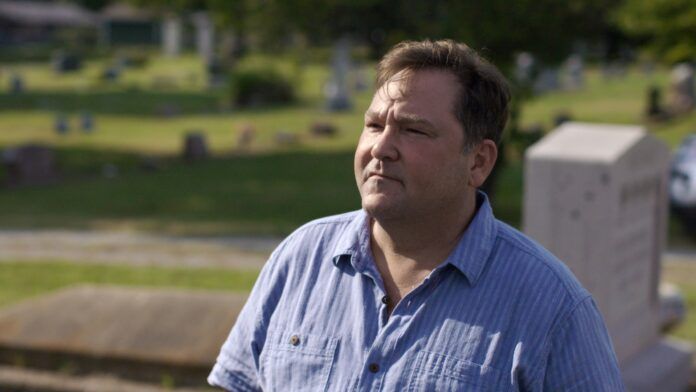
First episode of ‘America’s Hidden Stories’ focuses on Reign of Terror with late filmmaker David Bishop
The episode premiered May 29 at 7 p.m. CST on the Smithsonian Channel
A Smithsonian Channel documentary airing on May 29 focuses on the Osage Reign of Terror with an Osage filmmaker exploring his family’s history, as well as speaking with other Osage community members regarding that dark historical period on the Osage Reservation.
The Smithsonian Channel is launching its third season of “America’s Hidden Stories,” described as “a six-part series exploring little-known chapters of American history,” according to a news release issued by the channel and London-based Arrow Media, which was commissioned by the Smithsonian Channel to produce the Reign of Terror-focused documentary.
The Memorial Day launch of the third season starts with “The Osage Murders” episode featuring Osage tribal member David Bishop, who passed away unexpectedly in early May. A camera crew followed Bishop during his Summer 2022 visit to the Osage Reservation with a camera and production crew where he interviewed various individuals.
“Episode one follows David Bishop, a filmmaker and member of the Osage Nation who is on a deeply personal mission,” the release stated. “He returns home to learn the truth behind a series of reservation murders that happened a century ago through stories and artifacts passed down from the reservation’s ancestors. David will take viewers on his journey as he examines the events that inspired the film, Killers of the Flower Moon — premiering at the Cannes Film Festival (on May 20) — and meets other Osages with direct links to this history.”
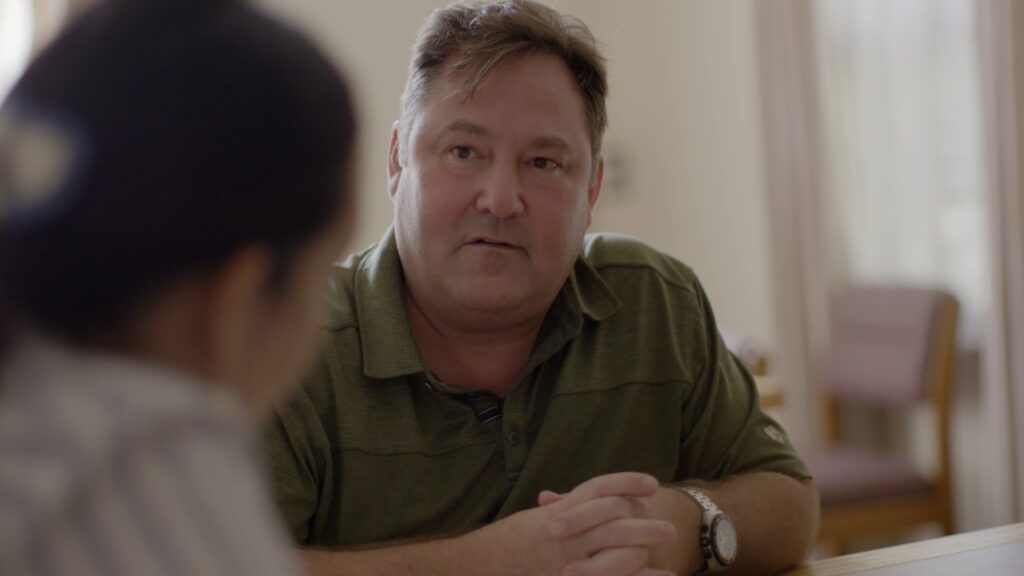
Episode 1 (The Osage Murders) of “America’s Hidden Stories” airs on the Smithsonian Channel on May 29 at 8/ 7 p.m. Central Time. The documentary is 44 minutes long for the one-hour TV timeslot with commercials.
“This all-new season of America’s Hidden Stories will revisit America’s past and redefine some of our nation’s most significant moments,” Pamela A. Aguilar, SVP, Head of Smithsonian Channel, Content said in a statement. “It’s imperative that as technology advances, we work to reveal the hidden truths and shed light on those who were touched by these forgotten chapters of U.S. history.”
Bishop, who grew up and graduated from high school in Pawhuska in 1990, takes viewers to the Osage Reservation where he researches a family member’s death during the 1920s when the Reign of Terror occurred. Bishop visited the Whitehair Memorial Osage Learning Center where he utilized archives and resources provided at the center, as well as national archives.
Unfortunately, with less than a month before the documentary’s airing, Bishop, 50, died in a May 6 rafting accident on the Rio Grande in northern New Mexico, according to a Santa Fe New Mexican article. Bishop, who lived in Santa Fe and Española, was discussing strategies with Arrow Media to promote the documentary airing at the time of his passing.
The company released a statement written by Bishop on his Smithsonian documentary work.
“It is with great honor and respect that I am able to tell such a poignant story about my Osage ancestors, through the lens (and partnership with) the Smithsonian Channel,” Bishop said. “I hope that by sharing my family’s personal journey it inspires others to come forward with their own families’ tragic accounts of these events as well. The story of the Osage people is not only about greed and atrocity, but also that of hope and redemption in a modern world.”
Anna Davies, an Arrow Media executive producer, as well as the documentary’s executive producer, said a show idea was long discussed in her company, which was approached by the Smithsonian Channel in early 2022 about a documentary idea on the Reign of Terror especially with the upcoming “Killers of the Flower Moon” film release announced for October.
“They came to us and said ‘we know about the Scorsese (directed) movie, we actually really like documentaries that allow the audience to learn something about a true story, particularly if they have some other framed reference for it with this movie coming out’,” Davies said. “What they said to us at that time was for them – and for us too – it was very important that we as a British production company wouldn’t just come along and try and tell the story, that we needed to be working in a completely integrated way with an Osage filmmaker and so they connected us with David Bishop who had worked with the Smithsonian Institution (before).”
“It was really good synergy because here we were with the production capabilities to make a documentary and we have a lot of experience working with the Smithsonian,” Davies said. “And here was David who was passionate about telling the story and he was an Osage tribal member and so it was a really perfect partnership … And during that process, Smithsonian said ‘we actually think it would be a great idea to have David be the person on camera taking the audience on that journey as an on-screen investigator."
Based in London, Davies never met Bishop in-person, but both stayed in constant contact via electronic means with the documentary planning, production and editing processes. A camera crew and director Anna Keel, joined Bishop in Oklahoma for two weeks where the interviews were conducted. Bishop and the production crews finished the documentary last fall, but the Smithsonian Channel – owned by Paramount – wanted the documentary release to coincide with the release of the “Killers of the Flower Moon,” Davies said.
Osages interviewed for the documentary include: Margie Burkhart, granddaughter of Mollie Burkhart, who is featured in David Grann’s “Killers of the Flower Moon” novel; retired tribal court judge Marvin Stepson; and Tara Damron, program director at the Whitehair Memorial.
“(Damron) talked to David on-camera about the guardianship system, the completely egregious financial theft of Osage money that was happening on this industrial scale that was sanctioned by the federal government,” Davies said. “But then David’s own family had this mysterious death that he and his sister, Donna Leonard, had known about … But, as with these things often is the case, none of it was completely clear what had happened. So, with Tara Damron’s help, David and his sister were able to see some archival materials, which actually told them stuff they didn’t know exactly about their great-grandmother, whose name is Odell Revard DeNoya Bighorse.”
Davies said others interviewed included an official in Washington, D.C. at the Smithsonian National Museum of the American Indian to provide historical context; Pawhuska elder Florence Bigheart Tranum; Meg Standingbear Jennings; former Principal Chief Jim Gray; artist Wendy Ponca; Pawhuska District Cook Ginger Kent-Hollis; and Assistant Principal Chief RJ Walker who was friends with Bishop since childhood.
Osage Minerals Council Chairman Everett Waller appears in the documentary to also help with storytelling, Davies said.
Damron said she and office staff helped Bishop research Odell Revard DeNoya Bighorse, who was an Osage original allottee. According to funeral records shared with Bishop and his sister Donna Leonard, Revard DeNoya Bighorse was born in March 1890 and died in January 1928 at age 37.
“It was sort of a journey for them as siblings to find out ‘is this really true?’, ‘maybe there was something else going on’,” Damron said of the visit. “Once you start researching something, you never really know what you’re going to find and once you get into it, a lot of times you’ll have more questions than answers, but you do find information and so we helped with that. And for my part, I contacted the National Archives in Fort Worth (Texas) and in one of their many records collections, they have the Osage Agency records and (asked for information on Revard DeNoya Bighorse) and they were super helpful because they have all of those records (including probate and guardianship files).”
During the interviews, Gray said he provided historical information of the Osage, which also included other difficult periods such as the Indian boarding schools and their forced assimilation practices at the time for the Indigenous students. “I was trying to give them a sense of the flavor of the period at the time,” Gray said, adding “it was a dark chapter in our tribe’s history.”
Standingbear Jennings, who is Principal Chief Geoffrey Standing Bear’s sister, provided family home movie footage which recorded her family members and other Osages living in the 1920s showing life in Pawhuska and the peoples’ lifestyles at the time. Davies said the black-and-white film footage was used in a previous documentary project in 2017 and made contact again for the latest project “and some of that footage is featured in the documentary.”
“We have David and Meg and Florence Bigheart (Tranum), who’s James Bigheart’s great-granddaughter, all sitting there watching it together and talking about that and also reflecting on what then happened and what the reaction to that wealth was by white America, which was jealousy and greed and resentment.”
Standingbear Jennings was vacationing in Costa Rica when her brother and other Osages attended the Cannes Film Festival for the Scorsese movie’s world premiere. In a phone call, she said she is glad more people will become aware of the Reign of Terror considering the period was not widely discussed in school classrooms through the years and some Osage families also would not talk about the period as well.
“Unfortunately, my grandmother, who lived with me for many years, not once would she ever talk about it, she would talk to me about some of her travels around the country and all the fun things they did, but in terms of the tragedies, the murders, no, she would never bring that up,” Standingbear Jennings said. “I’m glad it’s going to be aired so people will be able to hear the story. In fact, while we’re here in Costa Rica, we were watching the red carpet (live video) at Cannes and … And people we met here from Kentucky had no clue what was going on and I said ‘remember the name of this movie,’ you will hear about this.”
Walker said he stayed in touch with Bishop through the years and Bishop was proud of his latest documentary work. For the documentary, Walker and Bishop talked on camera while fishing at a pond on the Osage Nation government campus in Pawhuska. The two friends shared memories, talked about their families while fishing as they did together in younger years.
Gray noted “the sad part” about the documentary’s release is that Bishop is not here to experience it with his unexpected passing. “That was a blow, I felt sorry for his family, it was an accident and I knew he was looking forward to it, things were already in motion.” The others featured in the documentary also expressed their condolences to Bishop’s family and friends.
Walker said he was allowed to view the Smithsonian documentary a week before its release and praised the work. “I think it’s going to be a similar takeaway from what (viewers) will get from the ‘Killers of the Flower Moon’… It was professionally done, it had a lot of eyes on it, I expect it to be widely viewed and revealing. (In recently speaking with Bishop) he was very excited about it, very satisfied. It’s just a shame that he’s not going to be here because he’s in every scene in telling the story.” The Smithsonian Channel is online at www.smithsonianchannel.com and the “America’s Hidden Stories series page is at https://www.smithsonianchannel.com/shows/americas-hidden-stories





